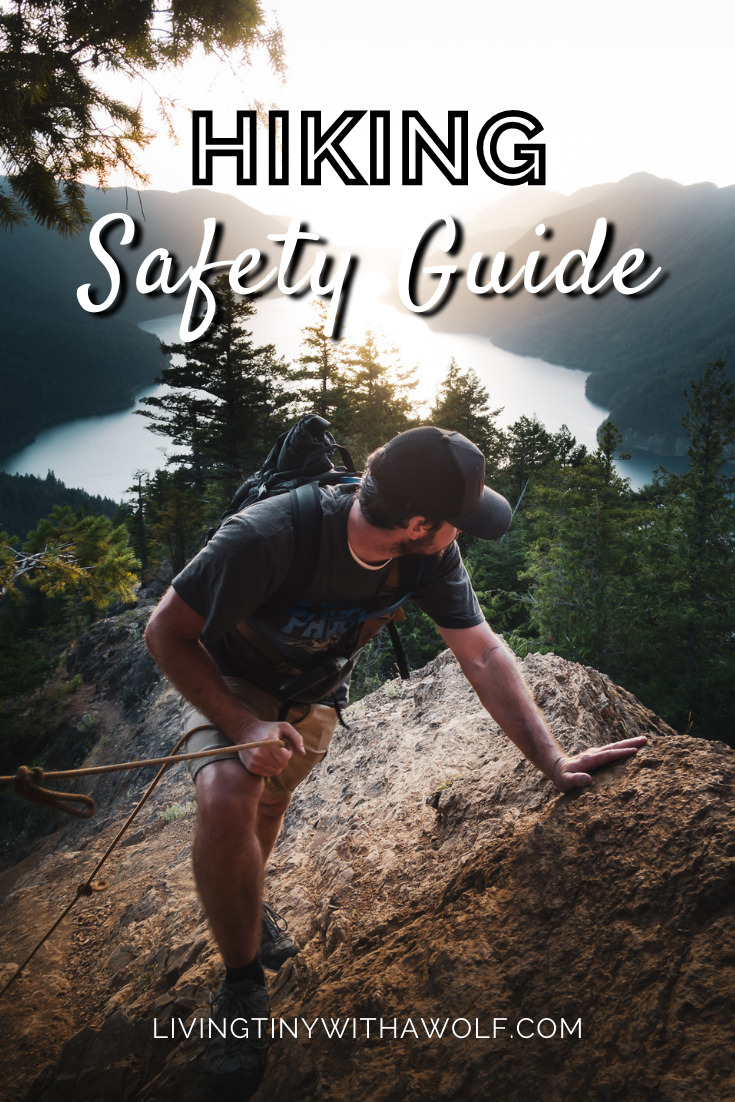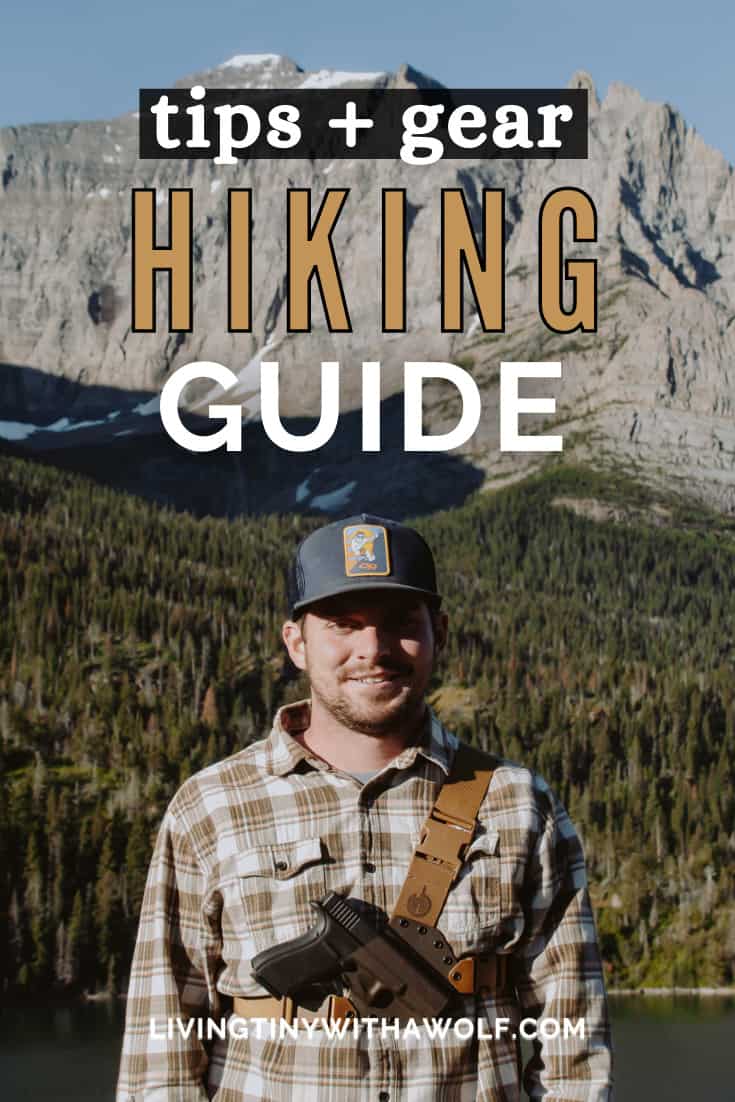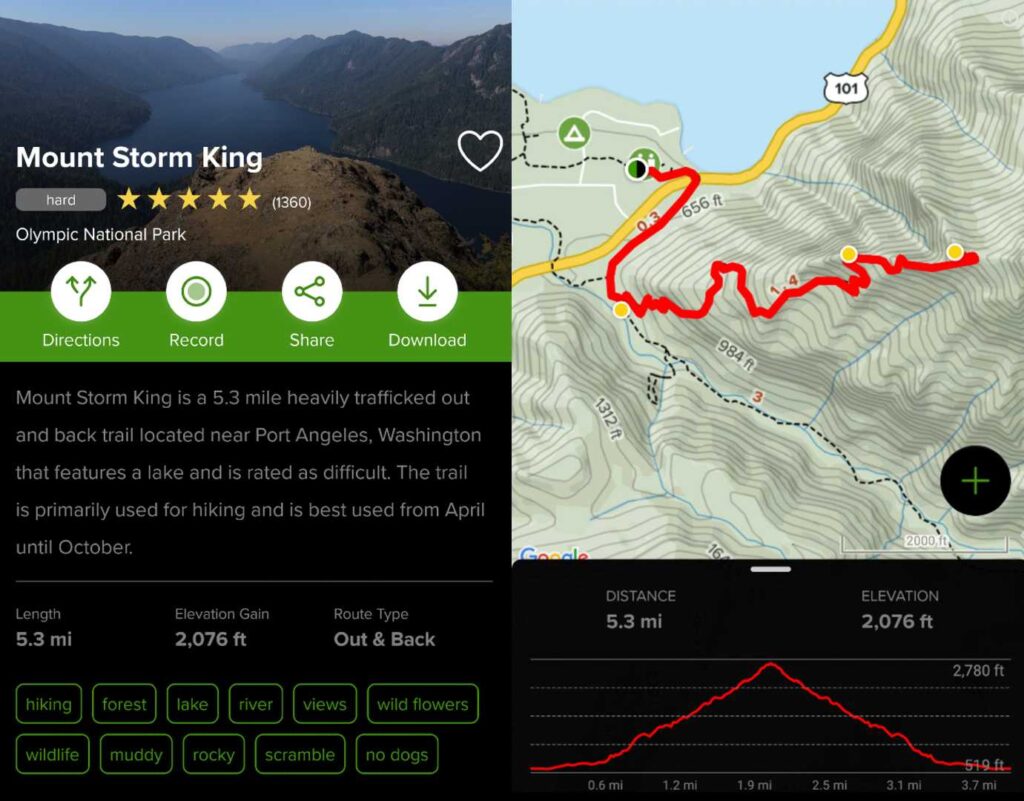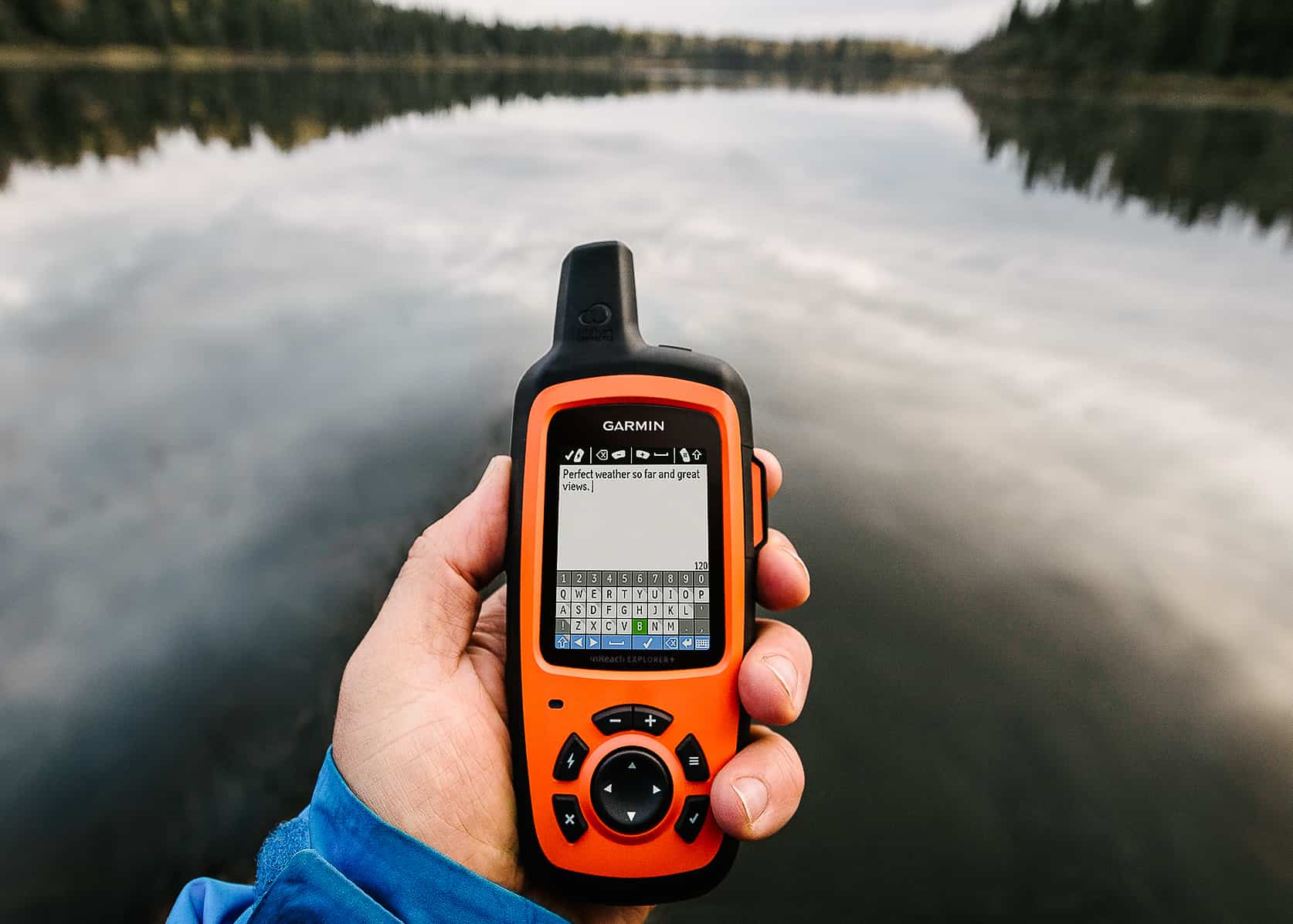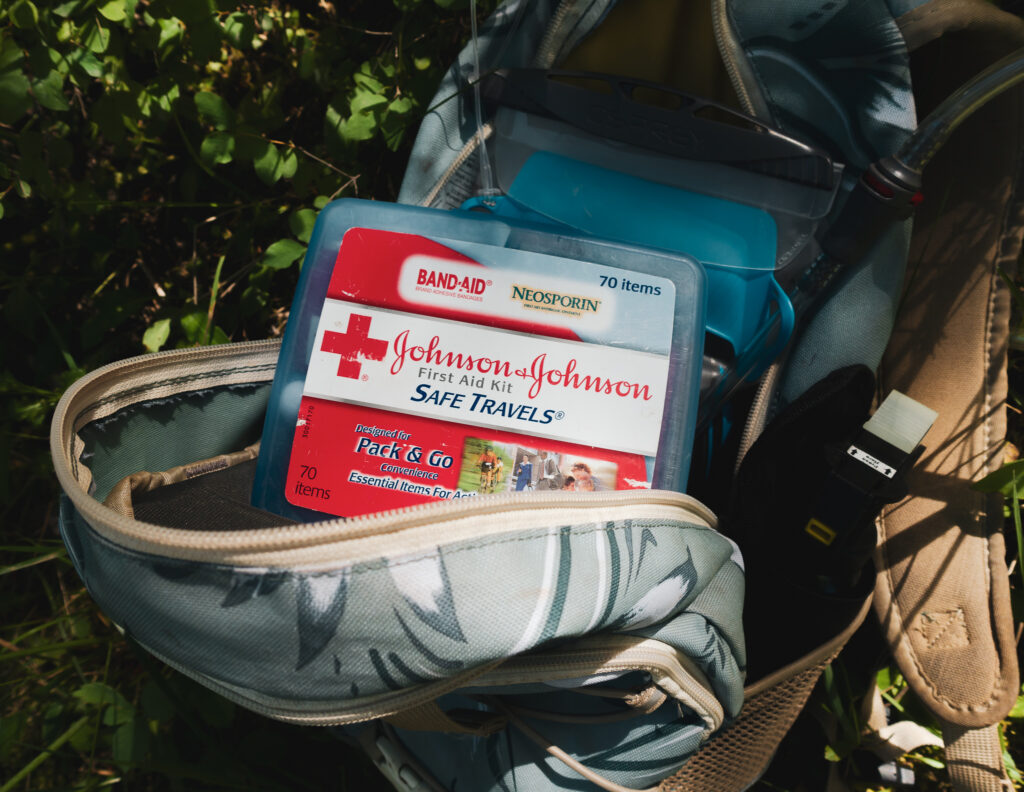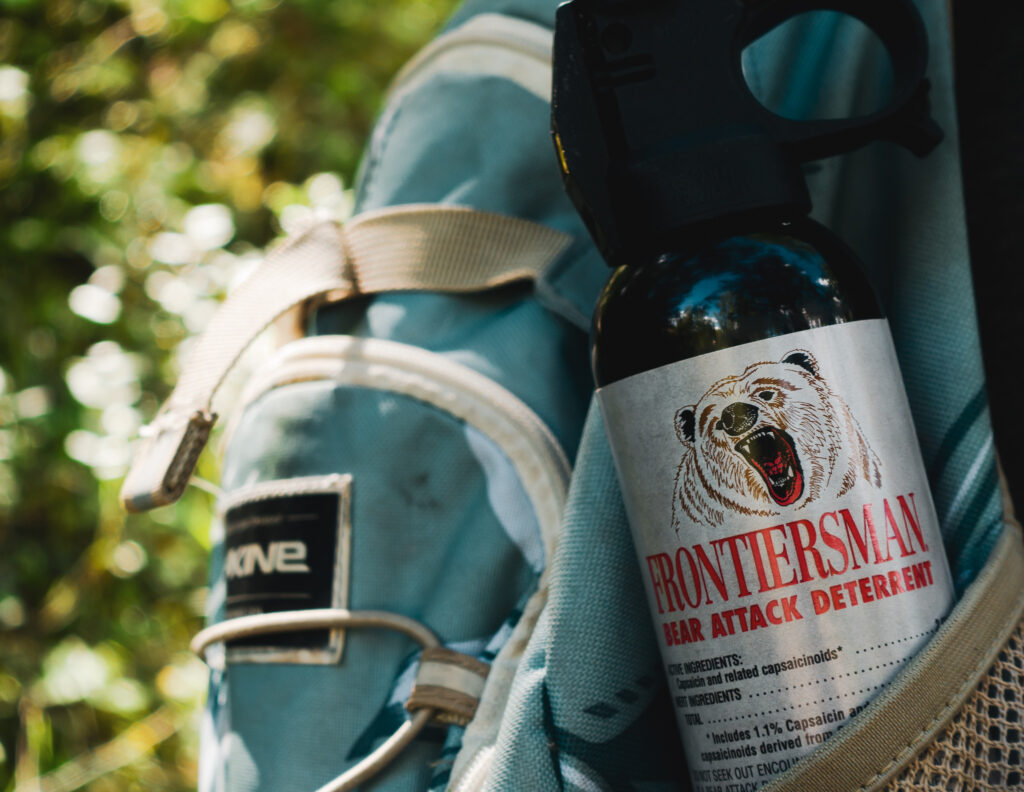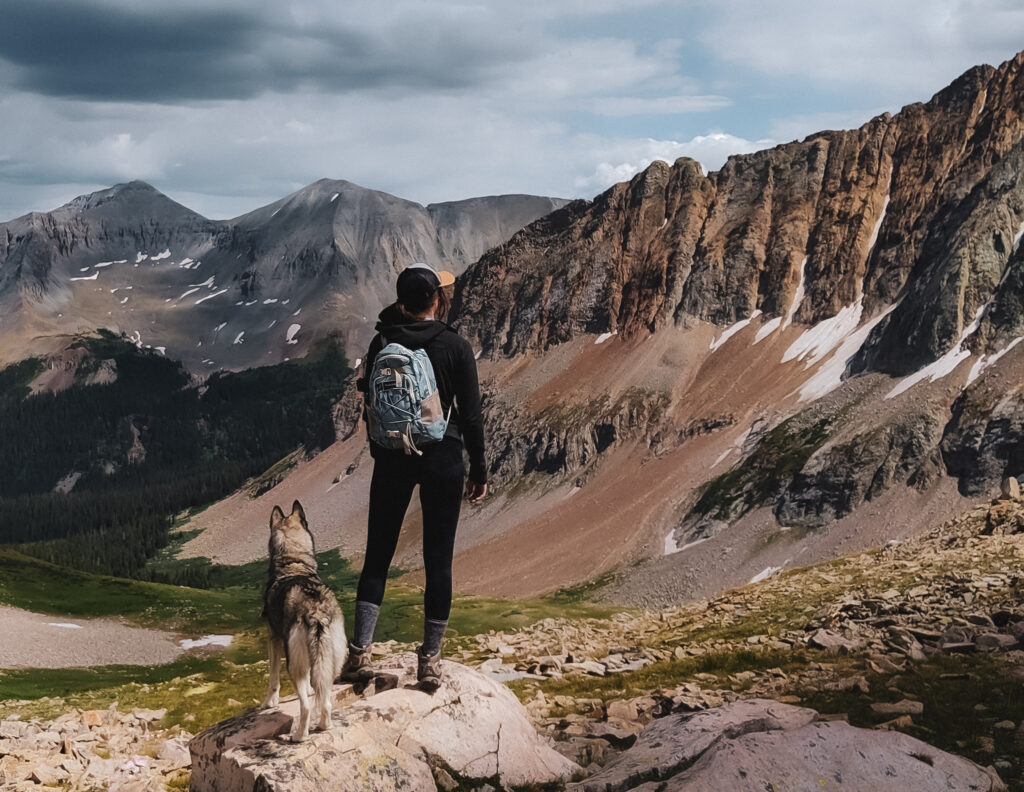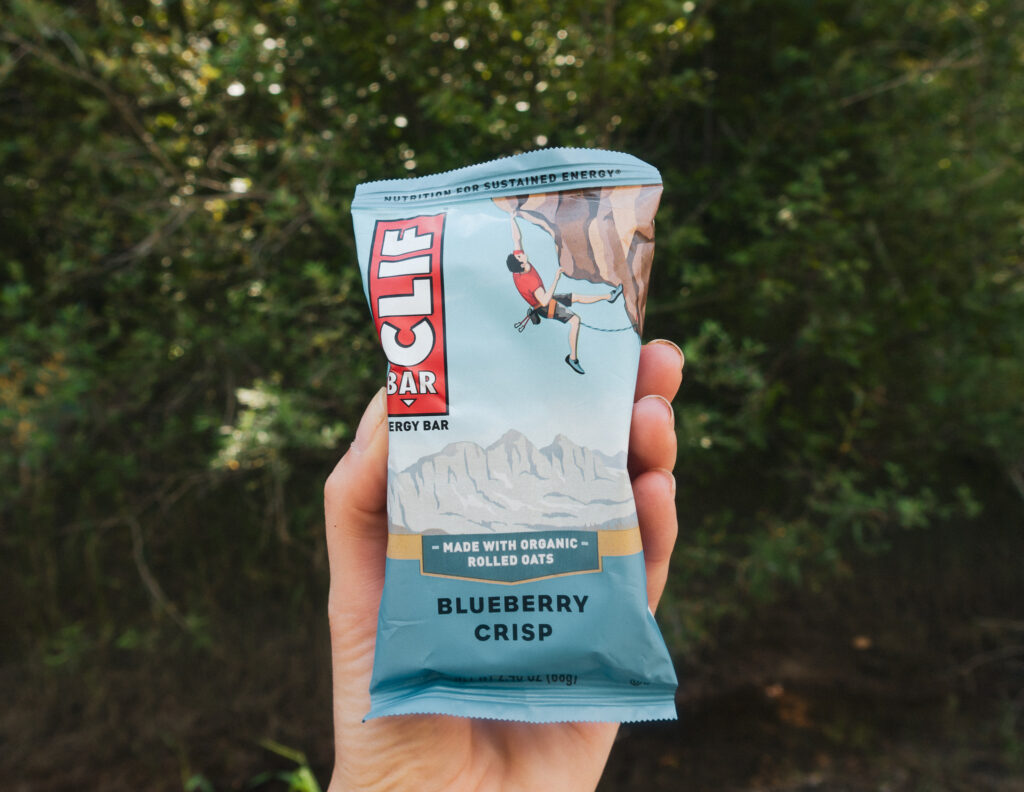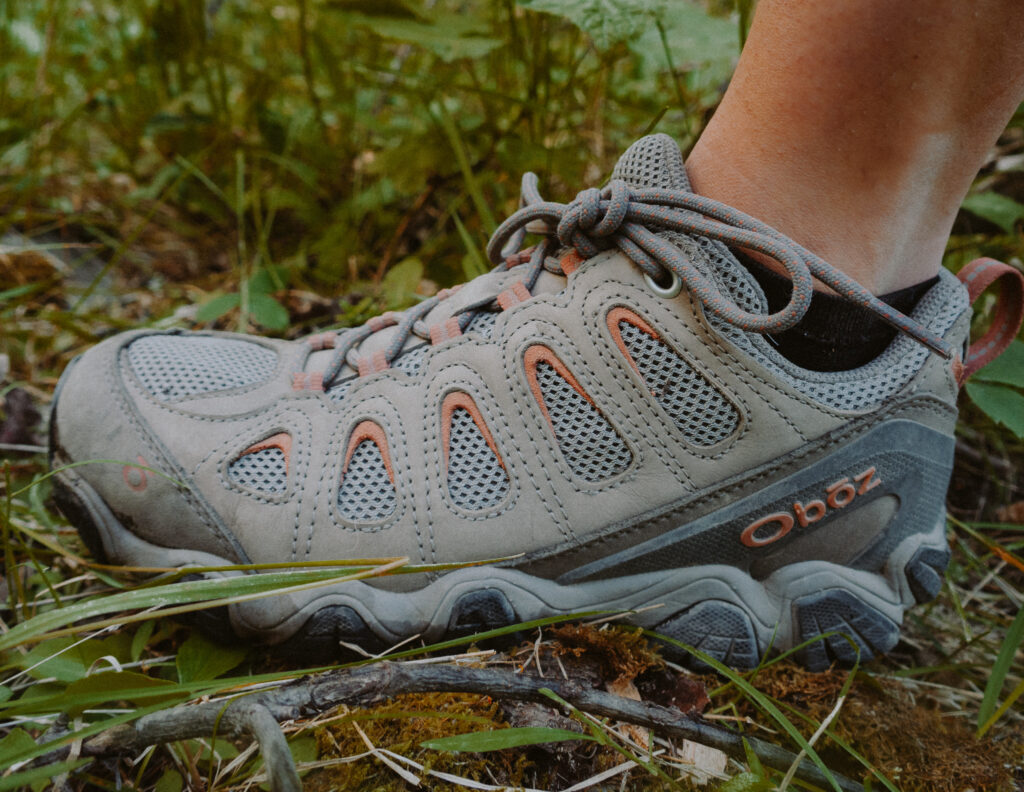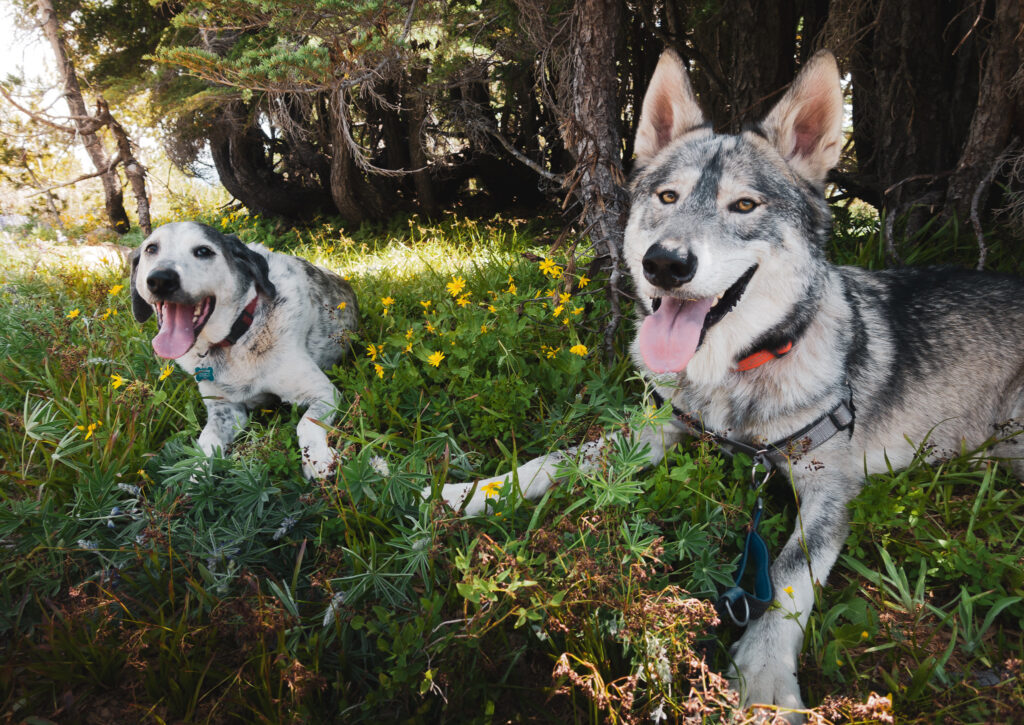Hiking Safety Guide For Beginners + How to Avoid these Mistakes
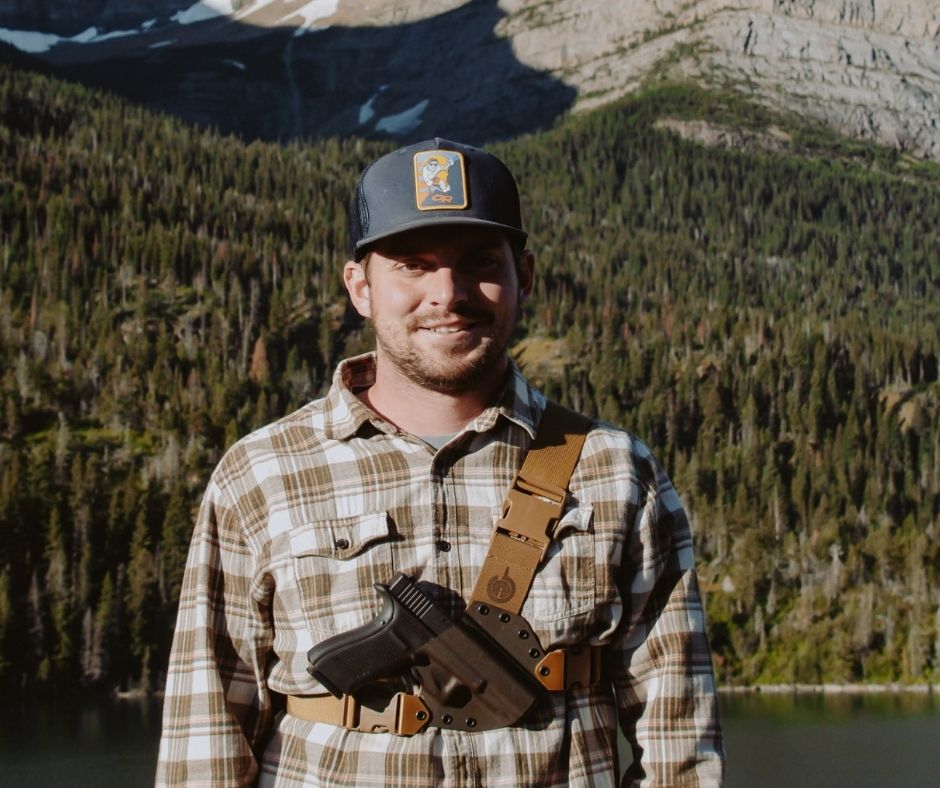
Hiking can take you to some of the world’s most beautiful places. But, it can be strenuous, and intimidating. Plus, if using the wrong gear, it can be quite uncomfortable. However, if you are prepared and equipped with the right knowledge and gear, you will have the confidence to let your two feet take you to some pretty extraordinary places. That’s why I made a hiking safety guide for beginners so you can get out on the trail and know exactly what to expect.
I definitely underestimated my hiking abilities and was less than prepared on more than one occasion in the beginning. Now that I have hiked many trails under countless conditions, I want to share my hiking safety knowledge with you, so you can learn from my mistakes and find yourself in breathtaking destinations without the struggle I endured.
So, If you are new to hiking, this hiking safety guide for beginners covers all the basics, including how to plan, prepare and gear up for your first hike!
Affiliate links may be sprinkled throughout this awesome, free content you see below. I’ll receive a small commission when you purchase from my links (at no extra cost to you), which I’ll totally blow on adult things like hiking gear and chai tea.
Table of Contents
ToggleChoose the right trail
Whenever I go on a hike, I always try to find out as much information as possible about the hike before I hit the trail. How do I find the trail? How long is it? Where does it go? And what is the difficulty level/incline?
For this I use an app called Alltrails. It’s a great resource that is free to use. You can download it on your phone and it provides GPS coordinates to the trail head. It also gives you data about difficulty level, vertical climb, distance and includes reviews from other hikers to allow you to gather as much info as possible.
For your first hike, I suggest you choose a trail that is somewhat short, between 1-4 miles. And one that has an elevation gain less than 1,000 ft. That is a great starting point for beginner hikers. Once you have mastered this, you can move on to longer and more technical trails! Keep in mind that it takes the average hiker about 30 minutes to cover one mile.
Don’t get lost!
As a good rule of thumb, if you stick to the trail, you will be able to get to your destination and back safely without any issues. But, if you need to take a bathroom break and venture off too far from the trail, having a back up plan is a must.
Use your phone
One thing I find really helpful, is to ‘pin’ the location of the hiking trail parking lot on my phone’s google map. That way, I know without a doubt, I will be going in the right direction if I lose my way. Your phone always has GPS connection even if you don’t have cell signal. Another tip is to check your surroundings for landmarks and highways surrounding your vehicle. You can also take pictures of important trail markers to reference on the way back. If you know how to properly use them, bring along a physical map or a compass.
GPS tracking/SOS device
Once you are a more experienced hiker, you may want to consider buying a tracking/SOS device such as the Garmin InResearch Explorer+ which has preloaded topo maps, satellite capabilities and can trigger an interactive SOS to the 24/7 search and rescue monitoring center.
Check the Weather
You should never go hiking without checking the weather forecast first. If a big storm is in the area, you might find yourself on.a hike in high winds, rain, or even hail and lightning. This is a recipe for an uncomfortable and even dangerous situation. Especially if you have a creek to cross, a flash flood makes it impossible to cross safely.
The morning of a hike, I like to check the weather conditions on the weather app. It gives me useful information about wind, temp, cloud cover, UV index and more. You will want to match your gear for the weather conditions.
Hike with a Friend
You are all set to hit the trail, but maybe you are not ready to go alone. Find a friend, or join a local hiking group. If you do plan to go on your hike solo, make sure you let a friend or family member know where you are going and when you will return.
In Case of an Emergency
Having an action plan in case of an emergency is important. Emergency situations create panic and anxiety in the best of us, and it is hard to think rationally when you are exhausted. The most common emergency situations happen when someone experiences an injury whether it’s from a fall, or hypothermia. Being prepared could prevent a bad situation from escalating into an even worse one. Be prepared by packing a first aid kit.
Pro Tip: If you get the opportunity to take a first aid course, do it. This is well worth your time and could literally save a life.
Emergency Contacts
Emergency information can be easily overlooked when we put our first aid kits together. But emergency medical and contact information is critical. Your hiking partner might be able to tell a rescue crew your name. But, they might have forgotten you have an allergy to penicillin or have no clue who your next of kin is.
It’s a good idea to have an emergency contact information card that can live in your backpack. Include the following: Name, Cell phone number, Emergency contact, Emergency contact phone number, Allergies, Any other important information.
Mountain Rescue
If you find yourself in a serious emergency on the mountain, call 911. Even if you are in an area with no service, emergency calls to 911 will still work. Before the operator even answers, a computer has already triangulated your latitude and longitude coordinates. Mountain Rescue groups operate under the sheriff’s office, so when someone calls 911 on the trail, the dispatcher determines if the mountain search and rescue services are needed and will send out a team to get you.
Pro Tip: Leave a copy in your vehicle of your itinerary of where you are planning to go and a current picture of yourself.
Prepare for Animal Encounters
Seeing wildlife is one reason many people head outside and can be an experience you will never forget. Watching a fox scurry in front of you on the trail, or a deer hopping across a field are encounters that make you appreciate nature. But, there are a few unwanted run-ins (think giant mama grizzly bear and her cubs in the middle of the trail) that will make you want to be prepared.
Always take extra precautions when in the wild, because anything could happen. Here’s a few tips to minimize wildlife encounters and ways to be prepared for any unexpected confrontations on the trail:
Tips for Animal Encounters
- Give animals space: Most animals will not attack unless they feel threatened. The best way to prevent this is to stay a safe distance away.
- Make noise: Most wildlife will avoid you as long as they know you are coming. Make sure you are being loud to reduce the chances of you surprising them. This can be singing, talking, whistling, clapping your hands or even wearing bear bells.
- Don’t wear headphones: If you wear headphones while hiking, you won’t be able to hear distinguishable sounds of wildlife. Use your eyes, ears and nose to stay aware of your surroundings.
- Avoid hiking at dawn or dusk: These are the hours many animals including bears and mountain lions are most active.
- Carry bear spray: A good quality bear spray keeps you safe and allows you to easily protect yourself without doing any real long-lasting damage to animals.
- Consider carrying a weapon: If you stumble across a mama bear and her cub, she may feel threatened and charge at you. It is better to be safe and equipped rather than get attacked. My husband always carries a 9mm in a Chest Holster when we hike. (Check out our Instagram to see it in action)
- Leave no trace principles: Pack out whatever food you packed in. By giving animals access to human food can make large, potentially dangerous animals too comfortable around humans.
Altitude Awareness
Hiking is a great way to chase views and see the world from above, but it can take you to elevations you are just not used to. As you climb, your body has to acclimate so having high altitude safety is essential when you are in the backcountry.
Is Your Hike High Altitude?
To be considered high altitude, you must be 8,000 to 12,000ft. When your body can’t acclimate, you risk altitude sickness. Symptoms of altitude sickness include headaches, dizziness, and nausea. If you think you are having altitude sickness, descend to a lower altitude.
How to Stay Safe while Hiking at High Altitude
- Ascend only 1,000 ft per day at high altitude
- Eat plenty of carbs
- Hydrate properly
- Don’t overexert yourself
Gear up
Having the right gear for your first hike is essential for a comfortable and successful adventure. With this gear list, you can make sure you have the necessary gear to hike safely.
- Backpack: allows you to carry everything on this list. An emergency can arise at any time on a hike and preparation is crucial to getting out of the wilderness safely. Having a backpack with gear to stay safe on a hike is important.
- Hydration and Water Filtration: Bring at least two liters of water per hiker. It’s important to make sure you are carrying enough water to sustain you throughout your hike, and then some. I use an Osprey water bladder because it allows me to drink while I walk, and not have to stop and can hold up to 3 liters of water. If you know there will be natural water sources available, bring along the Sawyer Water Filtration system which is lightweight, affordable and easy to filter water if you run out.
- Nutrition: Make sure you bring enough snacks to get you through the day, plus extra energy bars in case you are on the trail longer than you anticipated. Make sure they are nutritious and non-dehydrating.
- First Aid kit and Multi-tools: Basic first aid kits will have everything you need to disinfect and bandage minor wounds. You can also pack pain medication and a splint to handle emergency situations. Multi tools are excellent for cutting kindling.
- Flashlight: There is no way to predict when a distraction or incident will cause you to hike in the dark. A flashlight or headlamp is important to carry in your backpack on every hike. Find a flashlight with a strobe mode, which is useful as a signaling device in emergencies.
- Sunscreen and Bug Spray: Wear SPF 50 or higher. Preferably, waterproof sunscreen because if you sweat, you don’t want it to wash off. I carry a travel size bottle of sunscreen to reapply if the trail is more exposed than I anticipated. Insect repellent is a must for ticks, mosquitoes and fleas. I use Ben’s bug spray because my husband will get eaten alive if forget it.
What to Wear
Before you decide what you are wearing on your hike, take a quick look at the weather. Certain clothes are great for particular weather conditions, but inappropriate for another. Planning is fundamental to a successful and safe hiking experience. As a beginner hiker, you probably don’t have a closet full of Patagonia and North Face high quality outdoor hiking gear, but you should still pay attention to the clothes you are wearing. Below are my recommendations for what to wear hiking for beginners.
Pro Tip: Avoid cotton. Especially on your feet. Cotton absorbs more moisture than synthetic fabrics making it heavy and wet. Try to wear clothing that is made of athletic material like spandex. Not only is it more comfortable, but it dries a lot quicker too. There’s a reason hikers say that cotton kills in the backcountry.
- Hiking Shoes: Comfortable shoes make a huge difference on a hike. When you wear the wrong shoes, your feet will be completely miserable. If possible, you will want to buy hiking shoes in person so you can try them on and determine how well they fit. I love my Oboz, they have been the most durable and comfortable hiking shoes I have ever worn. Make sure you go on a short hike to break them in first. I personally do not recommend any type of ‘hiking sandal’. But, I’m a notorious toe-stubber even in my regular boots.
- Socks: Equally as important as hiking shoes. If going for a longer hike, I will double layer my socks. This prevents my feet from getting blisters. Darn Tough Hiker has a great merino wool hiking sock that is naturally antimicrobial and quick dry.
- Hiking Pants: Although this decision is up to you whether you want to wear shorts, hiking pants, or leggings, but i personally go with a synthetic legging, not only are they comfortable, breathable and moisture wicking, but they allow me to avoid getting caught on or scratched by rouge branches. They also keep you warmer should there be a sudden drop in temperature.
- Hiking Shirt: The most appropriate hiking shirts are made of synthetic materials. Not only are they more durable, but they are moisture wicking.
- Warm Layers: Even if there are no signs of rain in your weather forecast, you should never leave home without a rain jacket. Weather can turn stormy, windy or chilly and having an additional layer of clothing to prevent you from getting wet and cold, will ensure you are safe from hypothermia.
- Hat: Wearing a hat that allows heat to escape is great for hiking and keeps the sun off your face completely.
Trail Etiquette
When hiking on a busy trail, did you know there is a right of way? The person who is going downhill yields to the hiker climbing up. This rule generally only applies on narrow trails. Why? Because it takes momentum to climb a hill and being forced to step aside when not ready can make it hard to start again.
Be aware of other hikers trying to pass you. There are people who hike faster than you and might not want to be behind you the whole way up, just step aside and let them pass. That way, everyone can walk at their own, comfortable pace.
If you are the one who wants to pass others, don’t scare them by suddenly appearing next to them. Just say “hi! I’m going to pass you on your left!” or something along those lines.
If it is also a biking trail- cyclists should yield to hikers. And everyone yields to horses. For everyone’s safety, step off the trail.
Dogs on the trail
Have complete control of your dogs at all times. Do your best to keep your dog on the trail and out of sensitive or delicate areas. The best would be to keep them on a leash if their recall is not 100% and there are a lot of hikers on the trail. You never know who might be afraid of dogs or who has an allergy. Do not let your dog jump on other people.
Many National Parks do not allow dogs, so make sure to check before you get to the trail head if dogs are allowed.
WARNING: If your dog poops on the trail, pick it up. Seriously. DO NOT leave it in a poop bag on the side of the trail. NO it does NOT biodegrade. If i see you do this, I will be infuriated and tell you to pick it up and pack it out.
Leave No Trace
Please respect the places you hike to. Always practice Leave No Trace ethics on your adventures. Take your garbage out, don’t leave behind anything – that includes organic waste like fruit peels. Be aware of local regulations and please don’t damage these amazing places for the sake of a photograph.
Have Fun!
Although these are important hiking safety tips, they are designed to keep your hiking experience fun! Hopefully, if you are a beginner hiker, this Hiking Safety Guide for Beginners put your mind at ease. Follow us on Instagram, we’d love to have you!
Safe and happy hiking!

Sharing is caring! Please share this Hiking Safety Guide to Pinterest if you found it helpful!
